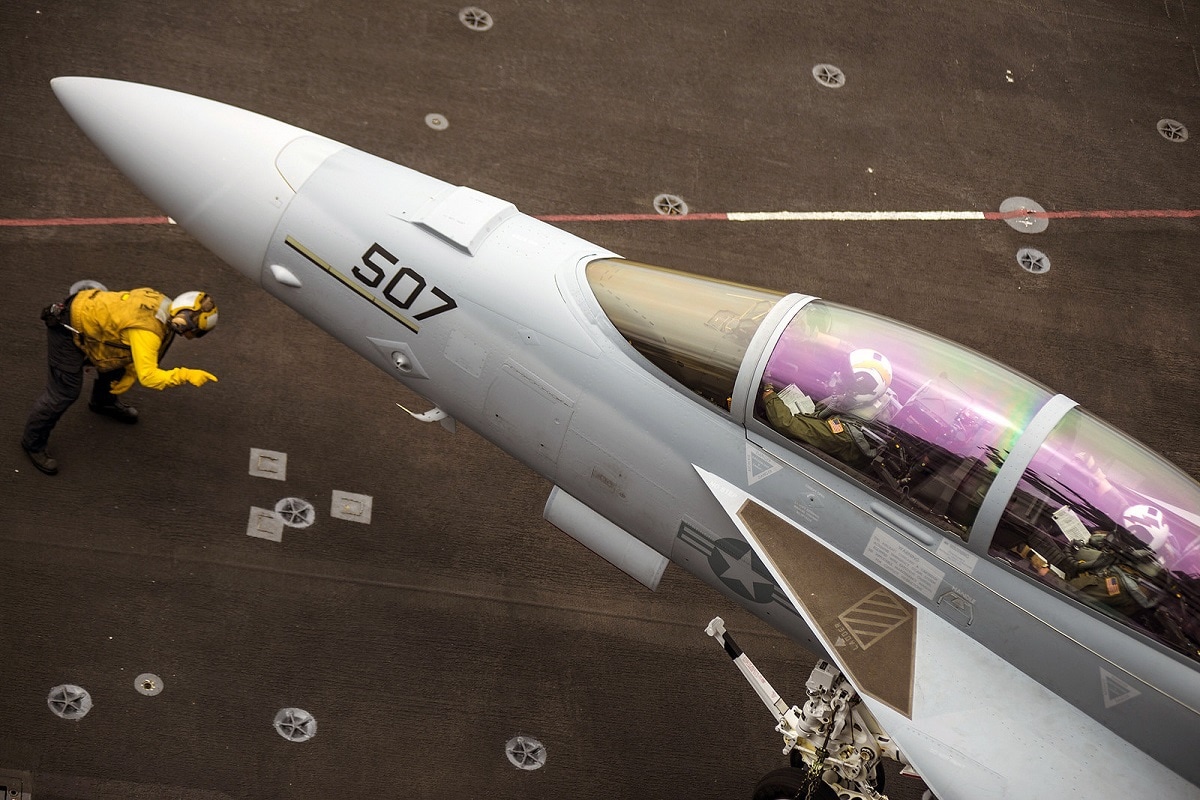Caleb Larson

PACIFIC OCEAN (July 31, 2017) An E/A-18G Growler assigned to the Vikings of Electronic Attack Squadron (VAQ) 129 is inspected prior to launch aboard the Nimitz-class aircraft carrier USS Carl Vinson (CVN 70). Carl Vinson is underway conducting carrier qualifications off the coast of Southern California. (U.S. Navy photo by Mass Communication Specialist 2nd Class Zackary Alan Landers/Released)170731-N-GD109-068
A fascinating publication by the Congressional Research Service, a nonpartisan public policy research institute, outlined what progress is being made on the U.S. Navy’s new weapon projects such as rail guns, lasers, and hypersonic projectiles. More specifically, the report outlined what the challenges are from an engineering standpoint, and practically speaking what role these new weapons would play exactly once deployed to active duty naval ships.
Sponsored Content
Let’s focus on perhaps the most promising of the three from a defensive standpoint, laser weapons.
The push for arming Navy ships with laser weapons has been prompted in large part by China’s increasingly capable missile force. Concern about massed anti-ship missile attacks have forced a rethinking of surface fleet structure, leading to suggestions that U.S. Navy ships may have to stay farther out to sea and out of range of increasingly capable Chinese anti-ship weapons, or that a more decentralized and distributed force structure made up of more, smaller ships would be necessary to mitigate the anti-missile threat.
Currently, the Navy uses surface-to-air missiles and Close-in Weapon System (CIWS) Gatling guns to shoot down incoming enemy missiles. Both systems are dependent on ammunition supplies. Once the ammunition is spent, the ship has to leave the fight or sink. They’re also expensive. Depending on the SAM in question, it may cost millions of dollars to take down even a single enemy missile, a cost that quickly increases with the number of incoming enemy missiles.
There may be a different solution to countering the Chinese missile threat, however: laser weapons.
Solid-State Lasers might be a potential solution to addressing both limited magazine depth as well as cost per shot. As lasers are electrically powered, they have a virtually unlimited magazine capacity. As long as there is fuel on board to generate electric power, an SSL will keep on firing. they’re cheap too — less than one dollar per shot or the cost in fuel to generate the necessary electrical output for a single shot.
Despite these positive points, Solid State Laser weapons do have some limitations. Lasers travel in a straight line, limiting their usefulness against surface ships to within-horizon distances, past which targets are obstructed by the curve of the Earth (a factor that would not be as much of an issue for aircraft armed with laser weapons). Dust, smoke, sand, rain, and water vapor can scatter and degrade a laser beam’s strength. Targets with heat shielding, like hypersonic missiles or inter-continental ballistic missiles, may be resistant to all but the most powerful laser weapons, as could targets with reflective surfaces or that roll and prevent a laser beam from focusing on a single spot, essentially diluting an SSL’s effectiveness.
You can read about several of the Navy’s current laser projects here.
Regardless of the challenges inherent to making laser weapons a reality, the Navy is sold and going all-in. As one Navy Rear Admiral put it, they’re getting ready to “burn the boats” with laser weapons.
Caleb Larson is a Defense Writer based in Europe. He holds a Master of Public Policy and covers U.S. and Russian security, European defense issues, and German politics and culture.
No comments:
Post a Comment